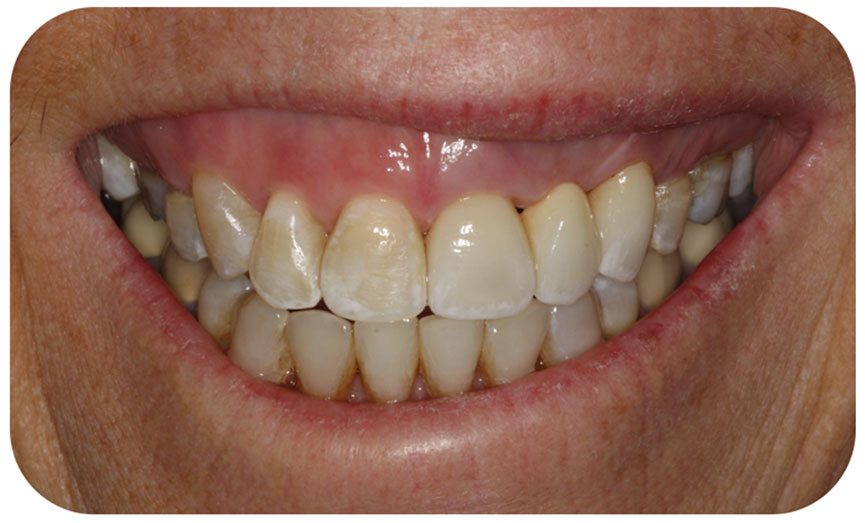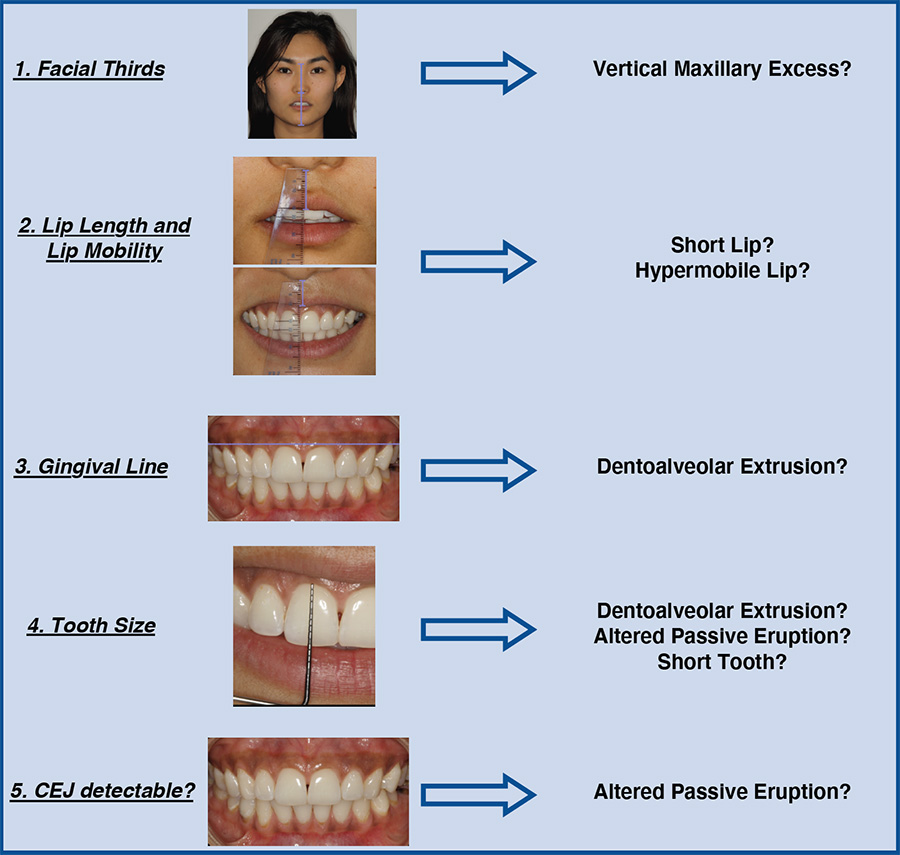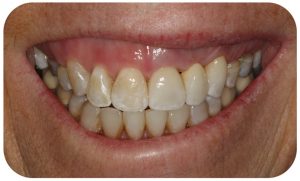
Diagnosing the Gummy Smile
By Caroline C. Eskow, DDS, MS
I’d venture to say that we’ve all met someone who was looking for a solution for their gummy smile. This person sometimes isn’t even aware of their gummy smile, but they know that they don’t like their smile for some reason. Well how do we help them?… I know you looked at the photo above and already started thinking about treatment options (crown lengthening, veneers, lip repositioning, etc). But I encourage you to STOP that thought process, take a step back, and determine the diagnosis first. You can remember your guess for later (see page 3)!
Let’s start by going through the diagnosis together.
There are 5 measurements that I take in order to diagnose a gummy smile. This makes the process very SIMPLE! Once the diagnosis is made, each diagnosis then correlates to treatment options.

- Facial Thirds: Measure from the glabella to base of the nose, and base of the nose to the inferior border of the chin. The middle and lower thirds should be equal. If the middle third is higher than the lower third, this may indicate vertical maxillary excess (meaning they have a long maxilla!) Treatment options for this include orthognathic surgery (maxillary impaction).
- Lip Length and Mobility: Measure the lip length in repose (relaxed) and with an “Eeeee” smile (high smile). The difference between the two is the mobility. The average lip length is 22-24mm, and it increases 1mm per decade after age 40. If the lip mobility is >8mm, this indicates a hypermobile lip. If a patient has a short lip (<22mm) or a hypermobile lip, treatment options may include lip repositioning surgery or botox.
- Gingival Line: If you draw a line across the gingival margins of the canines and centrals, the line should be even. If the line is concave, it may indicate dento-alveolar extrusion (DAE). This can occur when the teeth supraerupt, often in conjunction with incisal wear. Treatment options for DAE include orthodontic intrusion, crown lengthening, or extraction depending on the severity.
- Tooth Size: The average central incisor length is 9-11mm, and ideally has a 1.2 : 1.0 height to width ratio. When a tooth is short, it could indicate any of the following diagnoses: DAE, anatomic variation, or altered passive eruption.
- CEJ Detectable: Altered passive eruption can be diagnosed if the CEJs are undetectable. This occurs when passive eruption does not occur after a tooth erupts into the mouth. The treatment for APE may include esthetic crown

Mid face = 62mm
Lower face = 54mm
Lip length = 22mm
Lip mobility = 11mm
Gingival line = straight
Tooth size = normal
CEJ = detected
Circling back to the original patient from to top of the article, we can now go through the steps of diagnosis for this patient. Notice her measurements that were taken (under the photo).
Her mid-face is longer than her lower-face, which indicates that she may have vertical maxillary excess. In addition, her lip mobility is higher than normal, which indicates a hypermobile lip. This example illustrates that patients may have more than one diagnosis contributing to their gummy smile! For this patient, her treatment options could include a maxillary impaction, lip repositioning surgery, and/or botox. Because she had a normal tooth size, crown lengthening would not be indicated. And because her gingival line was straight, orthodontics would not be indicated. In the end, she elected no treatment for her gummy smile. So did you guess correctly?

Comments closed
No comments. Leave first!